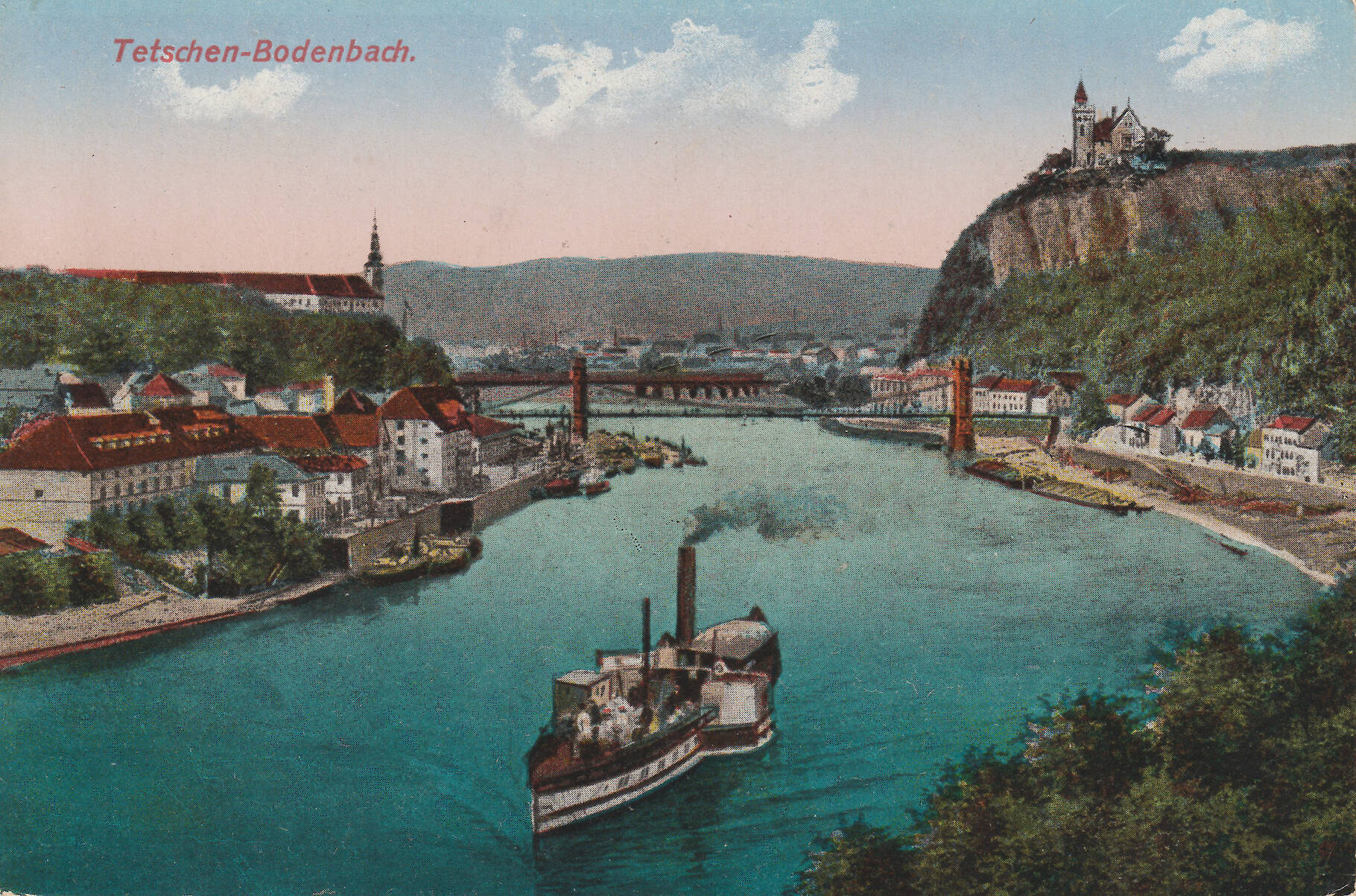
History of the synagogue
A Jewish population lived in Děčín1 until 1537, when they were expelled and denied the right to settle.2 New settlements were only resumed from 1848, after the Jewish population was allowed to settle in the town.3 In the following years, industrialisation and the railway connection, which made Děčín a border station on the Berlin–Prague line, led to extreme growth in the town and the neighbouring village of Podmokly4, which was later incorporated. The first Jewish community was founded in Podmokly in 1887, initially using various properties as temporary accommodation.5 It grew steadily and with it the need for a synagogue.6 At the beginning of the 20th century, the Jewish community acquired a plot of land with a gymnasium from "Deutschen Turnverein" and built a synagogue on it between 1905 and 1907.7
After the occupation of the Bohemian border regions by German Wehrmacht in 1938, the synagogue was constantly protected by local actors.8 They argued that the surrounding buildings were at risk in the event of arson and that the building could potentially be used for other purposes. The religious symbols of the synagogue were then removed and it was used by Wehrmacht and "Hitlerjugend" as a storage room and workshop.9
The Jewish community was severely decimated by Nazi persecution after the end of Second World War.10 It is unclear to what extent the synagogue was used in the post-war period. From 1967, the building was temporarily used as a district town archive.11 In 1987 the Jewish community sold the building to the city of Děčín.12
After 1989 the Jewish community reorganised. In 1993 the city of Děčín offered the synagogue to the Jewish community for use and in 1994 the building was returned to the community. The synagogue was extensively renovated from 1997.13 Today it is used by the Jewish community of Děčín and is open to the public.
- [1] Tetschen, German-language name until 1942, Tetschen-Bodenbach, German-language name from 1942 to 1945.
- [2] Cf. Klímová, Helena a. Matušíková, Lenka: Die demografische Entwicklung jüdischen Lebens in ausgewählten Gemeinden der Böhmischen Länder. München 2020, p. 383.
- [3] Cf. Kieval, Hillel J.: Ungleiche Mobilität. Die Juden, der Staat und die Gesellschaft in einer Zeit voller Wiedersprüche. München 2020, 1790–1860. München 2020, p. 121.
- [4] Bodenbach, German-language name until 1945, today a district of Děčín.
- [5] Cf. Jewish community Děčín: Die Synagoge in Děčín. Online (28.11.2023).
- [6] Cf. Klímová / Matušíková 2020 (like note 3), p. 383.
- [7] Cf. Jewish community Děčín (like note 5).
- [8] Cf. Lakomá, Markéta, Vrabcová, Věra a. Zemanová, Marcela: Die Synagoge erfüllt wieder ihren Zweck. Děčín 2022, p. 53.
- [9] Cf. ibid.
- [10] Cf. Klímová / Matušíková 2020 (like note 3), p. 383.
- [11] Cf. Lakomá a.o. 2022 (like note 8), p. 53.
- [12] Cf. ibid.
- [13] Cf. ibid.
- References »
Representation of the synagogue
There are only a few postcards showing the synagogue as a single motif. The photos were taken from a western direction.
The synagogue is not present on postcards with total views of the city of Děčín. There is a strong focus on the historic castle on the other side of the river Elbe. In the case of depictions with both parts of the city, the synagogue is not visible due to its location. It appears most frequently in total views of Podmokly1 taken from today's street "Popovická"2 area, where it is very small and barely visible. The building would have been significant or much more visible in views from "Thunovská kaple"3 and today's street "Předmostí"4, the area between the railway station and the river Elbe. In both cases there are only motifs that were taken before the synagogue was completed in 1907. Today, the synagogue is barely or no longer visible in both perspectives due to the major urban development changes in the 20th century. This circumstance is favoured by its average size and location on a slope. The building is strongly adapted to its surroundings and limited in its dimensions.
An exception to this is the view from today's street "E. Destinové"5, from where the synagogue is still visible.
- [1] Bodenbach, German-language name until 1945, today a district of Děčín.
- [2] Pfaffenberg, German-language name of the area until 1945.
- [3] Johanneskapelle, Thunsche Grabkapelle, German-language names until 1945.
- [4] Rosawitz, German-language name of the area until 1945.
- [5] Weiher, German-language name of the area until 1945.
- References »






